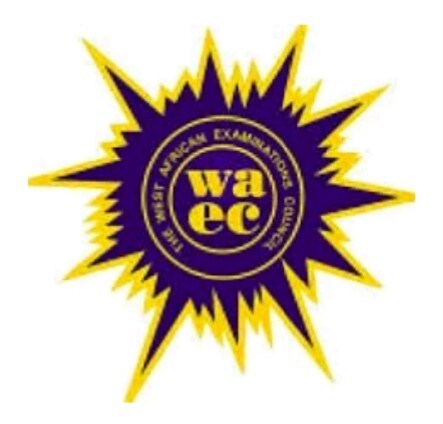If you’re planning to sit for the Carpentry and Joinery examination conducted by the West African Examination Council (WAEC), it is crucial to familiarize yourself with the syllabus.
The syllabus serves as a roadmap, outlining the aims, objectives, and topics you need to study.
About WAEC Syllabus for Carpentry and Joinery 2024/2025
In this blog post, we will provide you with an overview of the WAEC Carpentry and Joinery syllabus, including the exam format, recommended textbooks, and essential notes to help you excel in your exam preparation.
WAEC Carpentry and Joinery Exam Format
The Carpentry and Joinery examination consists of three papers: Papers 1, 2, and 3, all of which are compulsory.
Paper 1: This paper consists of forty multiple-choice objective questions, with a total duration of 45 minutes and carries 40 marks.
Paper 2: Divided into two sections, A and B, this paper requires 1 hour and 30 minutes to complete and carries 60 marks.
- Section A: Comprises five short-structured questions, to be answered in 30 minutes for 20 marks.
- Section B: Contains three questions, and candidates are required to answer any two within 1 hour for 40 marks.
Paper 3: This is a practical test that lasts for 2 hours. Candidates will be presented with two questions and must choose one to answer, carrying 100 marks.
The list of materials required for the practical test will be provided to schools at least two weeks before the exam date.
Alternative to Practical
In certain circumstances where acquiring materials for the practical test is not feasible, the WAEC may conduct a theoretical assessment of candidates’ practical skills. This alternative test consists of two compulsory sets of questions to be answered in 1.5 hours, carrying 100 marks.
WAEC Carpentry and Joinery Syllabus
The Carpentry and Joinery syllabus covers various topics, and here is an overview of the content:
-
Workshop and Worksite Safety
- Workshop Rules and Regulations
- First Aid
- Worksite Safety
- Safety Practices and Devices
- Workshop Layout
- Worksite Hazards and Precautions
-
Tools, Machines, and Maintenance
- Woodwork Hand Tools
- Portable Power Tools and Maintenance
- Types and Uses of Machines in Carpentry and Joinery Workshop
-
Materials: Types and Uses
- Timber: Growth, Structure, Conversion, Seasoning, and Uses
- Adhesives: Types, Uses, and Characteristics
- Ironmongery: Types and Uses
-
Construction Principles and Techniques
- Timber Preparation
- Joints
- Doors and Windows
- Formwork and Centering
- Estimating and Costing
- Wall Panelling, Cladding, and Partitioning
- Pre-fabricated Building
- Stairs, Handrail, and Balusters
- Scaffolding and Ladder
-
Finishes and Finishing
- Abrasive Tools and Grades
- Types of Finishes and Application
- Finishing Tools and Processes
-
Business Opportunities in Carpentry and Joinery Trade
- Furniture Making
- Material Supply and Merchandising
- Contract Work
Equipments Required
The syllabus also provides a list of facilities, major equipment, and materials required for effective teaching and learning. Some of the essential items include a standard workshop, first aid box, complete tool box, workbench, various types of saws, planes, chisels, hammers, and measuring tools.
WAEC Recommended Textbooks
To aid your exam preparation, WAEC recommends the following textbooks:
- Brian Porter & Christopher Tooke (3rd Edition)
- Wood Trades (Part 1 and 2) by A.Y. Emary
- Carpentry and Joinery (Bks 1 and 2) by David R. Bates
- The Theory and Practice of Woodwork (3rd Edition) by George Love
- Joinery by W.B. Mackay
- Carpentry by W.B. Mackay
- Carpentry and Joinery (Bks 1, 2, and 3) by R. Bayliss
- Woodwork in Theory and Practice by John A. Wartor
FAQs
What topics are covered in the WAEC Carpentry and Joinery syllabus for 2024/2025?
The WAEC Carpentry and Joinery syllabus for 2024/2025 covers key areas such as:
- Workshop Safety: Principles of safety in the workshop, use of safety equipment, and handling of tools.
- Tools and Equipment: Identification, maintenance, and proper use of hand tools and power tools in carpentry and joinery.
- Wood Technology: Understanding different types of wood, their properties, and uses in construction.
- Joinery Techniques: Methods of joining wood, including mortise and tenon joints, dovetail joints, and dowel joints.
- Construction of Wooden Structures: Techniques for building doors, windows, frames, and roofs.
How can I access the official WAEC Carpentry and Joinery syllabus for 2024/2025?
You can access the official WAEC Carpentry and Joinery syllabus for 2024/2025 by visiting the WAEC official website or consulting your school. WAEC also provides the syllabus in downloadable PDF format on its website, and some schools may provide hard copies to students.
What is the importance of studying the WAEC syllabus for Carpentry and Joinery before the exam?
Studying the WAEC syllabus for Carpentry and Joinery helps candidates understand the scope of topics to be covered in the exam. It allows students to focus on essential areas, familiarize themselves with the exam structure, and properly prepare for both the theory and practical sections of the examination.
Conclusion
Studying the WAEC Carpentry and Joinery syllabus is crucial for your exam preparation.
It provides a clear outline of the topics you need to cover and the exam format you can expect.
Additionally, the recommended textbooks serve as valuable resources to enhance your understanding of the subject.
By utilizing the syllabus and textbooks effectively, you can approach your exam with confidence and maximize your chances of success. Happy studying!






